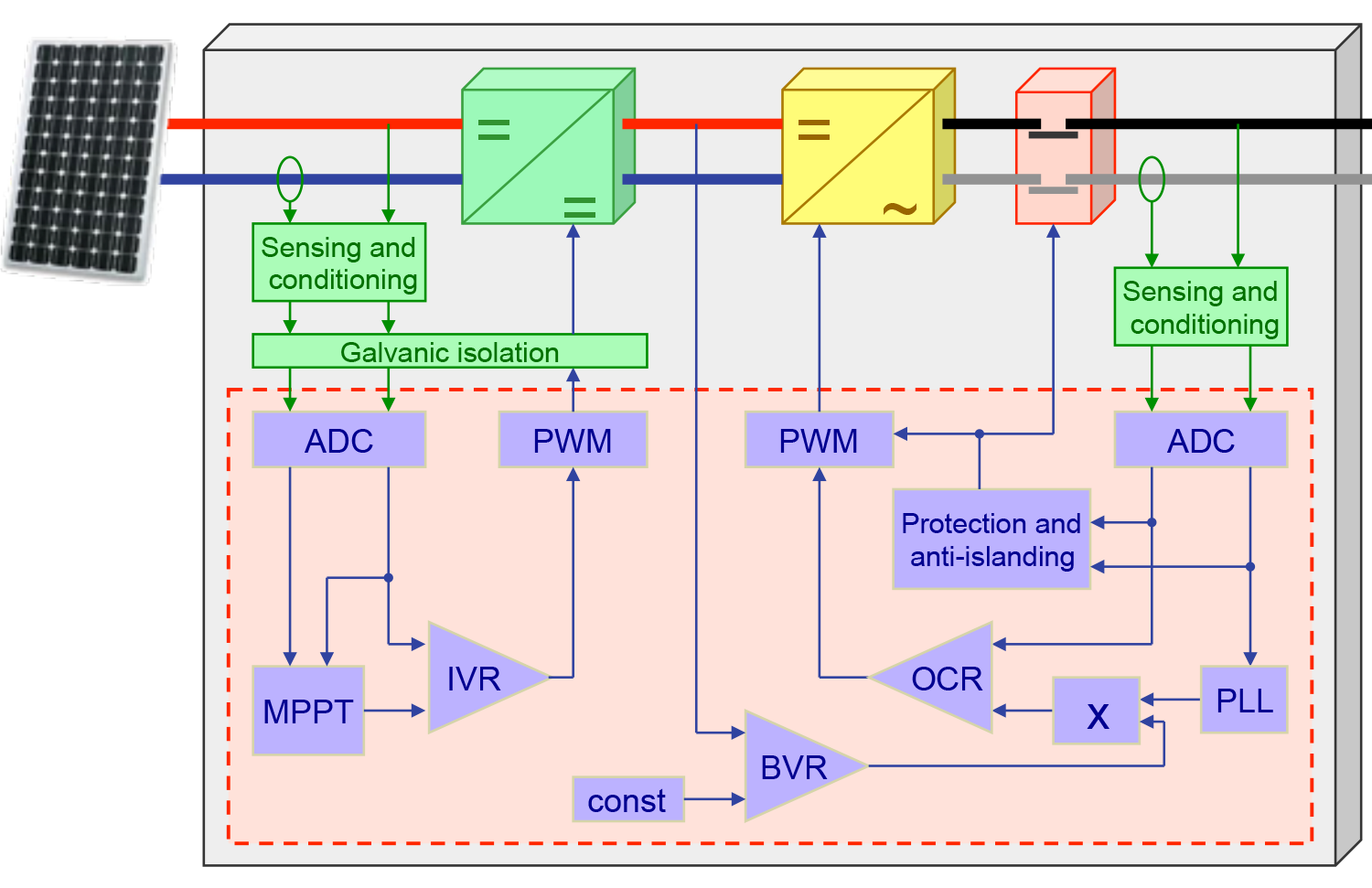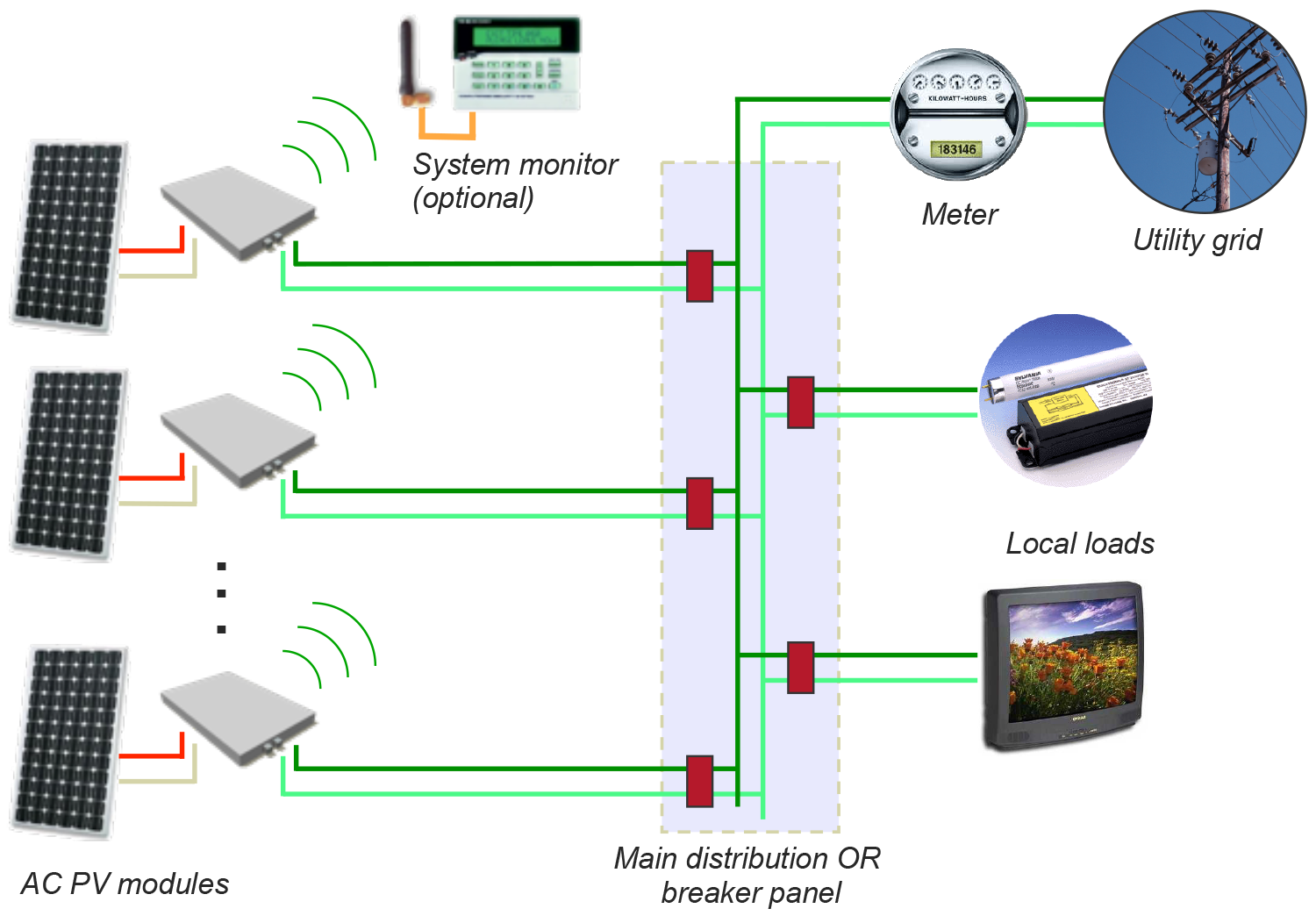UCF researchers are working with a start-up company to develop a new generation of an integrated micro-inverter grid-tied system, or “AC brick”. This AC brick is designed to be married to a photovoltaic (PV) panel, transforming it into a smart AC PV module. This smart AC module includes all features required for grid-interconnection, including grid-synchronization, current wave-shaping, protection, and anti-islanding, as well as data communication. This system definition is inherently modular, and allows the consumer to size and expand the system as their budget permits. It allows maximum power point tracking (MPPT) to be applied to each PV panel individually, effectively maximizing the energy yield of the system. It further eliminates the need for high-voltage DC wiring, DC-fusing, and disconnect, radically reducing installation costs. The removal of DC wiring also makes this system touch-safe whenever the grid is absent, a feature crucial to the safety of installers, servicemen, and firemen.
 Grid-Tied Inverter Structure. Credit: Issa Batarseh
Grid-Tied Inverter Structure. Credit: Issa Batarseh
Grid Interface
The photovoltaic system of the future will be expected to support stand-alone operation in an intentional island. It is also expected to actively support grid-operation by providing reactive power and harmonic compensation, voltage amplitude and frequency stabilization, and peak demand shaving. UCF researchers are developing a new AC-microgrid architecture that would coordinate PV generation, battery systems, plug-in hybrid electric vehicles, secondary backup generation, in addition to smart loads. This AC-microgrid is being designed for on-the-fly configuration, and will be able to synchronize and tie to the distribution utility grid, or create a self-sufficient intentional island. It will have the intelligence to manage generation, energy storage, and load shedding based on local energy consumption patterns as well as tariffs and weather forecasts obtained from a web server. This would maximize the value of this system to urban and remote-area users, as well as for the utilities.

A Paradigm Shift in Smart PV Integration — New Architecture.
Credit: Issa Batarseh
Years of Research: 2006 – Present
Selected Publications
- Analysis and Optimization of Variable-Frequency Peak Current Mode Control Techniques for Microinverters
- Dynamic Dead Time Optimization and Phase-Skipping Control Techniques for Three-Phase Micro-Inverter Applications
- Design and Implementation of Three-phase Two-stage Grid-connected Module Integrated Converter
- Hybrid ZVS BCM Current Controlled Three-Phase Micro-inverter
- A Center Point Iteration MPPT Method With Application on the Frequency-Modulated LLC Microinverter